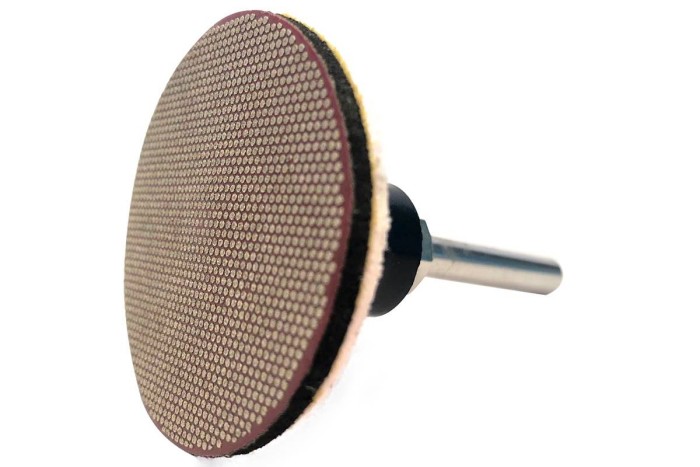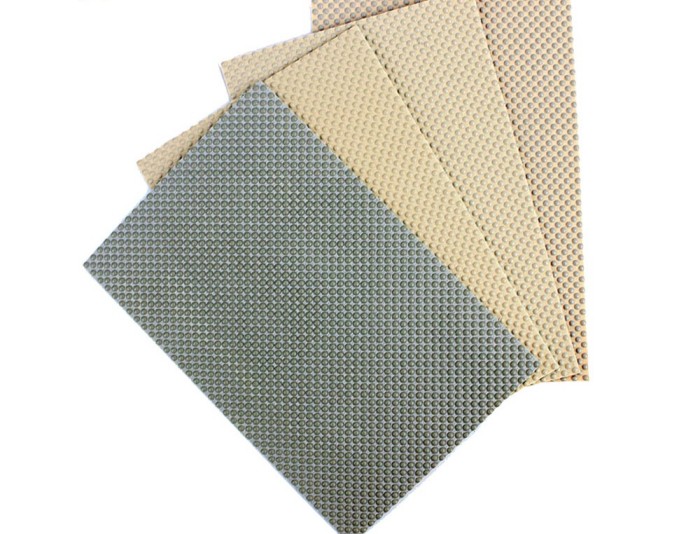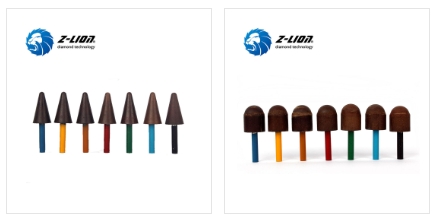
What are the tools for grinding ceramics?
Sanding Discs and Sandpaper
1. Sanding discs
Sanding discs are essential tools for ceramic surface preparation, providing a versatile and effective method to achieve the desired smoothness, shape, and surface quality. These round ceramic abrasive tools are available in a variety of sizes and grit sizes to meet different surface preparation needs and applications. When using a sanding disc, it is important to understand its proper use and its benefits in refining ceramic surfaces.
The process of using sanding discs involves attaching them to a drill or rotary tool and gently grinding them onto the ceramic surface to achieve the desired smoothness and shape. The abrasive nature of the sanding disc allows for precise material removal, allowing craftsmen and manufacturers to achieve customized surface finishes and effectively address imperfections. In addition, sanding discs can be used to remove burrs and uneven portions of ceramic surfaces, helping to improve the overall refinement and quality of the finished product.
The availability of different grit grinding wheels provides flexibility to address a variety of surface conditions and processing requirements. Coarse grain sizes are suitable for initial material removal and addressing larger surface defects, while finer grain sizes are suitable for achieving smooth and polished surfaces. This adaptability enables precise control of the surface treatment process, ensuring the desired surface quality and texture are achieved.

2. Sandpaper
Sandpaper is a versatile and essential tool for grinding and refining ceramic surfaces, providing a precise and effective way to achieve the desired smoothness, shape, and texture. When used correctly, sandpaper can enhance the overall refinement and quality of ceramic products, making it an indispensable tool for craftsmen and manufacturers seeking to achieve superior surface quality and beauty.

Choosing the right sandpaper for ceramic surfaces:
Choosing the right sandpaper is critical to ensuring an effective and safe surface treatment. It is necessary to ensure that the grit of the sandpaper will not damage the ceramic surface. Generally speaking, fine-grit sandpaper is better for grinding ceramic surfaces because it removes material precisely and achieves a smooth, polished surface. Coarse-grit sandpaper, on the other hand, is great for removing larger ridges and uneven areas, effectively addressing surface imperfections.
Proper use of ceramic surface sandpaper:
When using sandpaper to polish a ceramic surface, it is recommended to soak it in water for a period of time. This helps lubricate the surface and prevent the sandpaper from clogging, ensuring a smoother, more effective sanding process. Repeatedly moving the sandpaper over the ceramic surface in a consistent and controlled manner allows for precise material removal and achieves the desired smoothness and shape.
Benefits of Sandpaper in Ceramic Surface Preparation:
Sandpaper offers several advantages in ceramic surface preparation. Its abrasive properties enable precise material removal, allowing craftsmen and manufacturers to achieve customized surface finishes and effectively address imperfections. In addition, the availability of different grit sandpapers provides the flexibility to address a variety of surface conditions and treatment requirements, allowing for precise control of the surface treatment process.
Grinding Heads and Machines
1. Grinding heads
Grinding heads are ceramic grinding tools with conical or hemispherical heads designed to treat smaller areas on ceramic surfaces or hard-to-reach places. These specialized tools provide surface finishing precision and versatility, allowing craftsmen and manufacturers to achieve the smoothness and shape they need in areas that are difficult to reach with larger grinding tools.
When using the grinding head, it must be fixed on the electric drill or rotary tool to ensure that it is firmly fixed. This allows for controlled and precise grinding on the ceramic surface, allowing craftsmen to treat specific areas accurately and efficiently. By gently grinding the ceramic surface with a grinding head, the desired smoothness and shape can be achieved, contributing to the overall refinement and quality of the finished product.
The unique design of the grinding head makes it particularly suitable for complex and detailed surface treatment, where precision and control are crucial. Their conical or hemispherical shape allows for targeted material removal and shaping, making them ideal for addressing local imperfections and achieving customized surface finishes.

2. Machines
In addition to hand tools, machines also play a vital role in grinding ceramic surfaces, improving the efficiency and precision of surface treatment. One such machine is a rotary grinder, which provides a fast and efficient method of grinding ceramic surfaces. These machines often have adjustable speed and direction of rotation, allowing detailed and customized grinding jobs to be performed to achieve the desired surface quality.
Using a machine such as a rotary grinder has several advantages for grinding ceramic surfaces. Adjustable speed and direction of rotation provide flexibility and control, allowing craftsmen and manufacturers to precisely address specific surface conditions and processing requirements. This allows for efficient material removal and shaping, helping to improve the overall sophistication and quality of ceramic products.
However, safety must be a priority when using a grinder or any other machine for grinding ceramic surfaces. Adhering to safety protocols and following the instructions outlined in the operator's manual is critical to preventing accidents and ensuring a safe work environment. Proper training and understanding of machine operation are critical to reducing the risks of grinding ceramic surfaces and achieving optimal results.
Whichever ceramic grinding tool you use, you need to be careful and gentle with your grinding to avoid any damage to the ceramic. Before using any tool, you should experiment and choose the correct grit size and tool to ensure the best results.
-
Online service
-
Official wechat
account
-
QQ:40933769
-
E-mail:
sales@z-lion.com
Online service
Please feel free to give your inquiry in the form below. We will reply you in 24 hours.

